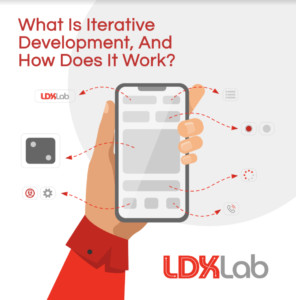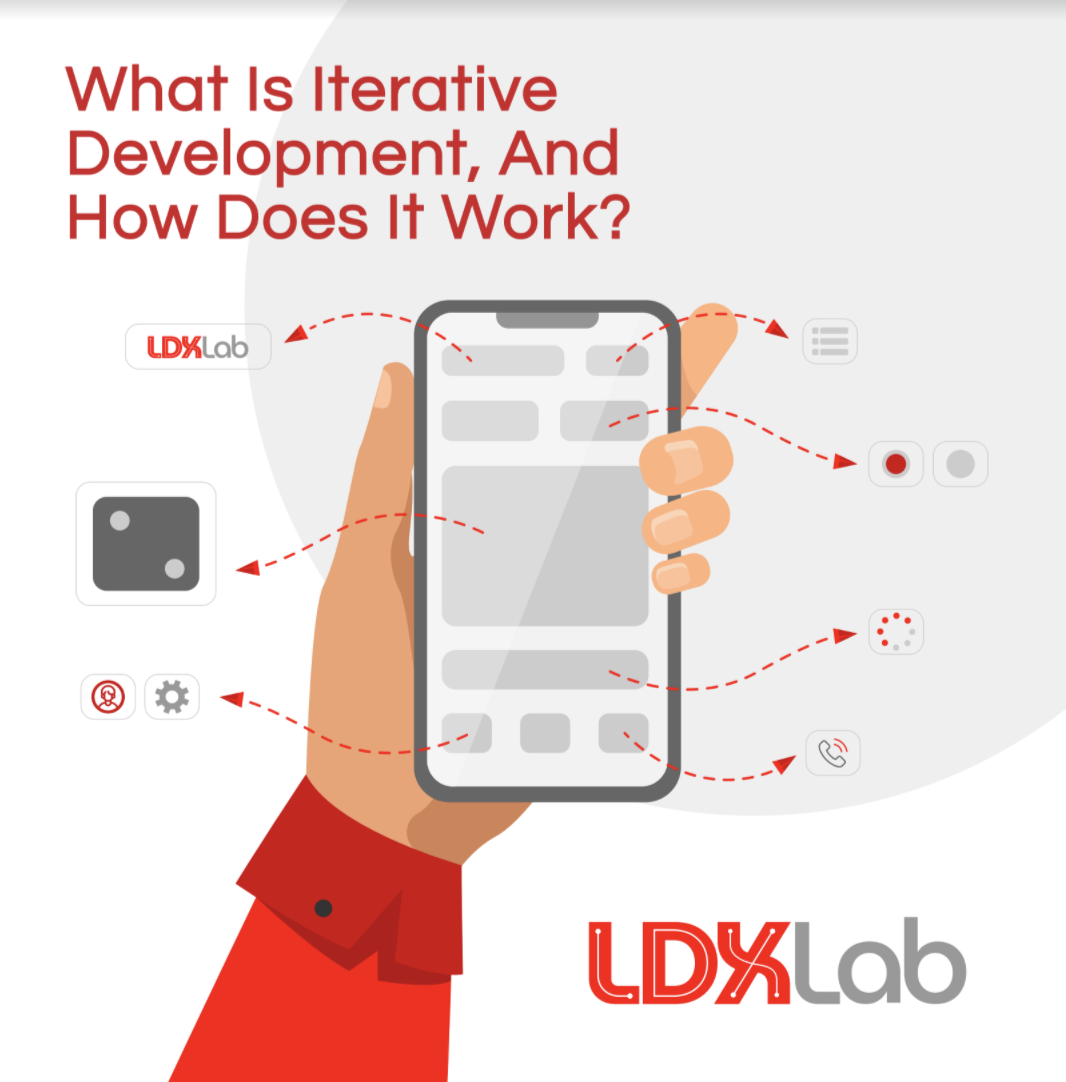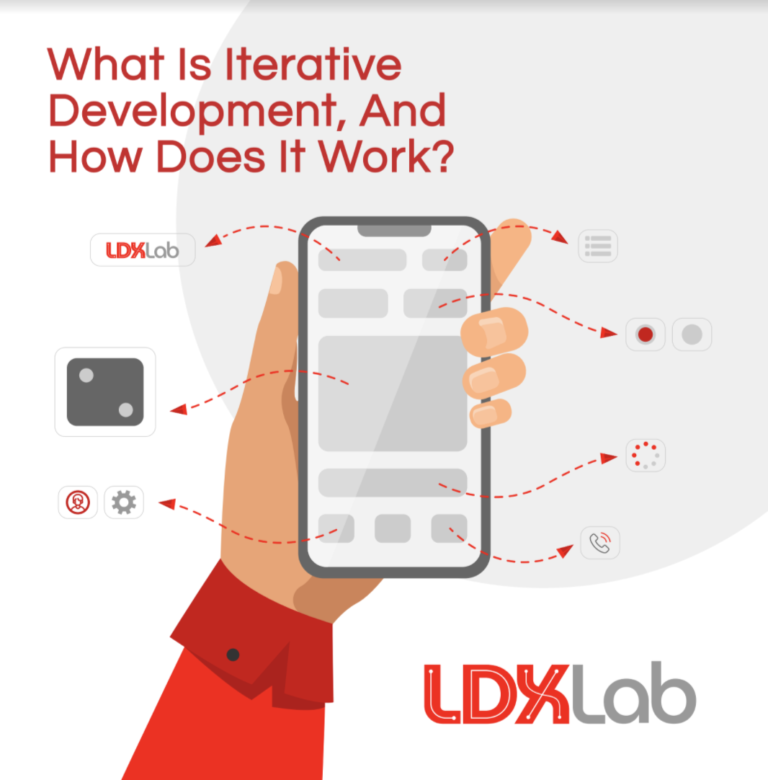What Is Iterative Development, And How Does It Work?
- Reading time: 4 minutes

As global business progresses quickly into a digital-first ecosystem, software development has become an integral aspect of just about every type of business. As time goes by, the methods we use to accomplish these goals have evolved considerably, and using agile and iterative development is a critical component of this trend.
What is Iterative Development?
An iterative development model breaks down the software development process into smaller, repeatable chunks, referred to as cycles. Upon completion of each cycle, the product is improved and iterated until it is ready to deliver. Some iterations may also include deliverables, so you can release a viable product that your end users can try without having to wait for the entire project to finish and launch.
The Process
We start with an initial planning session with all stakeholders so that we can collect and identify the general project requirements and create the project vision. This means that we take into account technical and business goals so we can adapt the final product to the needs of your users. Once that is done, we organize the team and set the goals for all the possible deliveries of the project.
After this initial planning phase, we can now start the iterative process, which consists of the following five stages:
1. Planning. Stakeholders come together to flesh out the software requirements and business goals. In later iterations, we also look at risk and quality assurance, but initially, this isn’t a significant issue. Here, we’re looking more at the overall project requirements and scope of the features to include in the iteration.
2. Design. This phase is where we establish technical requirements, such as the architecture, business rules, user experience flows, assets, etc. Once all tech and flow details are clear, we can create and estimate all possible tasks to do in the implementation phase.
3. Development. Now it’s time to start writing code and building the technical architecture, databases, and so on. We execute all tasks committed from the previous phase to build the product. At this stage, we also test the software with automated tests to identify any issues or potential bugs that might arise from the development. This ensures that the product performs according to expectations.
4. Review & Retrospect. Once the code is written, it’s time to review the deliverable of this iteration and identify any other issues that might have appeared from the previous phase. As a team, we review the work that has been done to create this project and improve our practices for the next iteration.
5. Evaluation. Once all these steps are complete, we ship the new features and improvements into the product so the client can evaluate and use it. We then take that feedback and apply it to the next iteration.
Go deeper into the Iterative Development process in the infographics!

Does Iterative Development Always Work?
As with any development strategy, iterative development has pros and cons. This type of development has significant overhead because we are planning and controlling the project in cycles. This is one of the reasons why this methodology is not recommended for very small projects.
Another important factor in iterative development is that it helps the team improve on each cycle. Having a small project with very few or single iterations doesn’t use this methodology to its fullest potential.
Iterative Development Pros
On the plus side, iterative development is adaptable and tends to speed up production cycles, making it more cost-effective for the client. Feedback is ongoing, so it’s easy to stay focused, measure progress, identify risks, and debug as we go.
● Time efficient: It’s more efficient to complete the whole project while working with iterations because many issues and improvements can be discovered along the way—instead of the more traditional approach that waits until the end.
● Cost effective: Once we’re finished, the client has a working product they can deploy immediately.
● Visibility for the stakeholders: Involving customers from the start achieves better results than holding back the delivery until the end.
Iterative Development Cons
This methodology requires a consistent client engagement throughout the process to identify risks and bugs, and not all clients can commit to this.
● Team and time: the team improves its quality and processes in the project in each iteration. If the project is too small with too few development cycles, the team cannot take advantage of this methodology.
● Stakeholder commitment: as we mentioned in the iteration phases, it is very important that at least one stakeholder has a constant commitment throughout the process to identify risks, errors, and help with the definition of the project in each delivery. This does not mean that the stakeholder has to spend a lot of time actively working with the team, but the commitment and awareness of the project throughout its lifecycle is more beneficial to the team.
● Time limit: Working with iterations reduces a clear time limit and project end date, so it may expand to several iterations because it is very common to increase the scope along the way, find more issues, change project goals, etc.
How LDX Lab Works
At LDX Lab, we believe in the value of each delivery. Ultimately, we want to avoid surprises, both during the development process and when we deliver the product. Since each step is incremental, it lacks the surprise factor of meeting the proposed objective during the beginning phases.
Much more than progress for the sake of showing progress, we consistently deliver the product with an increase. We work with functional increments and iterations that can be deployed immediately using an agile methodology, so our clients achieve value and get to market with their software much faster.
Do you have a software or app idea you’d like to deploy? We’d love to hear about it! Reach out today to speak to us about your project.
Hans Araya
What Is Iterative Development, And How Does It Work?
Free download
An iterative development model breaks down the software development process into smaller, repeatable chunks, referred to as cycles. Upon completion of each cycle, the product is improved and iterated until it is ready to deliver.


